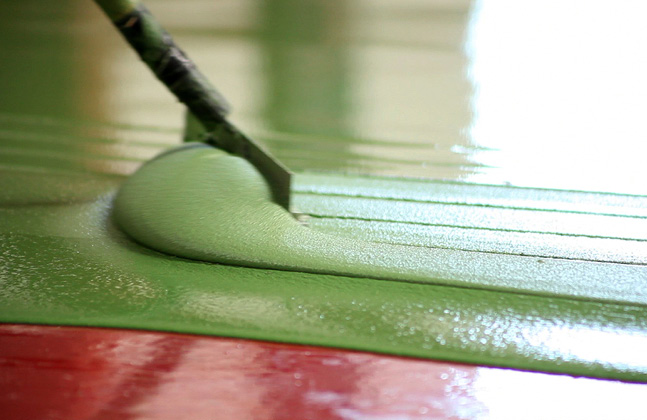Resin flooring applicators need to be constantly vigilant to shield against floor failure causes – as they can sneak into the installation at a number of crucial points.
While a resin floor can provide a high-quality, long lasting and effective surface, if it fails then it can lead to operational problems, increased lead times and unwanted production costs.
This blog post will help to identify the possible points of floor failure that can occur at each stage of a flooring project.
Specification
This is actually one of the most important steps, as failing to correctly analyse the site’s conditions and intended future use can lead to the wrong system being applied. Everything from the likelihood and severity of impacts, exposure to chemicals, temperature changes, amount and type of traffic, humidity levels and even the amount of UV radiation needs to be considered.
Substrate Preparation
The substrate needs to be properly prepared, this is usually achieved by shot blasting to create a surface that the coating can adhere to. Failure to do so can cause an ineffective bond that can result in delamination or osmotic blistering. This can be especially vital in refurbishment projects where a substantial amount of dust, dirt, chemicals and grime could have previously contaminated the floor area.
Check whether a damp proof membrane is required, especially if it is a new construction with a concrete base in contact with the ground.
Mixing
Mixing the resin hardener at high speed can cause the material to foam, meaning that there will be too many bubbles in the system.
Make sure that the resin to hardener mix ratio is correct. The timing, blending process and choice of mixing equipment are all important factors at this stage.
Application
Make sure to use the right primer for the specified floor system.
Give everything enough time – rushing the application or using the floor before it has had time to fully cure will negatively affect the final floor.
If enough pressure isn’t exerted on an epoxy system then this could also result in unwanted bubbles in the finish.
Excessive humidity in the area can negatively affect the curing process.
Post-installation
Moisture vapour transmission from beneath the surface can blister the floor’s finish. This happens as moisture moving up from the concrete slab can put pressure on the coating which forces it off the concrete. This potential problem needs to be identified early on to protect against it.
If the coating has exceeded its pot life then it can lead to a number of failures after the floor has cured.
Ultimately the surest way to ensure an effective floor finish is to source the right flooring solution for the environment and work with a highly trained applicator who knows the system like the back of their hand.
Flowcrete is always available to provide expert advice on the ideal flooring solution and our network of approved applicators means that if you choose to work with us you can rest assured that the highest possible flooring standard is achieved.





